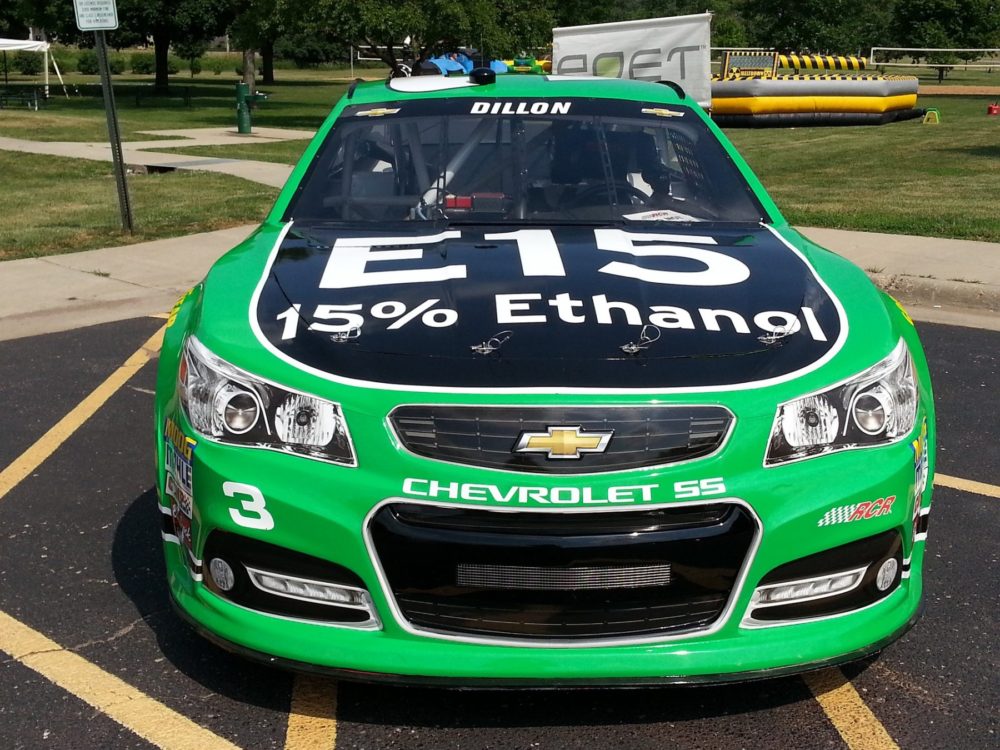CHICAGO, May 8, 2020 – Cleaner air could help us in our defense against the COVID-19 virus.
A recent study by Harvard T.H. Chan School of Public Health[1] concluded that there is a significant correlation between high concentrations of fine particulate matter (PM 2.5) emissions from cars and increased vulnerability of citizens contracting the COVID-19 virus. This link between pollution and COVID-19 deaths was previously documented by a group of Italian researchers[2] as well.
Higher blends of ethanol in gasoline help in fight against Covid-19 by improving air quality and lung health.
PM 2.5 emissions are very fine particle size pollutants which the lungs have a particularly hard time filtering, thus contributing to diminished respiratory health. Inhaling fine particulate matter can affect the lungs and the heart.
People with pre-existing lung and heart diseases, children, and the elderly are at a higher risk from complications resulting from exposure to particulate matter. Those living in urban areas with large numbers of vehicles and traffic congestion face higher exposure than people living in suburban neighborhoods, or more rural areas.
In addition, low income, African American, and Latinx communities are often exposed at a disproportionate level, resulting in higher rates of asthma and lung disease when compared to other communities.
For the past 25 years, Chicago Area Clean Cities has worked with commercial and government fleets to reduce air pollution from the transportation sector. Improvements in engine technologies have led to reductions in fine particulate matter, but we can do better by moving to alternative fuels, such as higher blends of ethanol.
The Harvard Study corroborates and reinforces previous research conducted at the University of Illinois at Chicago which reflects the benefits higher blends of ethanol has on reducing PM 2.5 emissions from vehicles. This work was done with help from The Hormel Institute, University of Minnesota, a leading cancer research department and part of the Masonic Cancer Center.
Dr. Steffen Mueller, PhD, Principal Economist for the Energy Resources Center at University of Illinois at Chicago, found that increasing the blend of ethanol beyond 10 percent up to 25 percent significantly reduces cancer-causing aromatic emissions and PM 2.5. The Harvard study takes the next step and directly links high levels of these dangerous particulates and vulnerability for contracting COVID-19.
By overlaying an atmospheric emissions model over census data, the UIC study[3] documented ethanol’s ability to reduce PM 2.5 concentrations. This was particularly evident in largely African American and Latinx neighborhoods near Chicago’s expressway corridors.
“The UIC Study may in hindsight provide insights into a potential link between the much higher mortality rate from COVID-19 deaths in PM 2.5 polluted areas documented in the Harvard Study and the recent data on high COVID-19 death rates for minorities in the Chicago and Northwest Indiana area,” Mueller said, “Obviously, PM 2.5 emissions are just one important variable besides pre-existing health conditions and other factors that impact Covid-19.”
Healthy lungs are our first defense against this virus and other respiratory ailments. Reducing PM 2.5 emissions through alternative fuels, such as higher blends of ethanol, can help lessen our vulnerability. If you cannot breathe, nothing else matters.
E15, a 15 percent blend of ethanol, is approved for year-round use in 2001 and newer passenger vehicles by the U.S. Environmental Protection Agency to help reduce emissions. It is time now to consider the use of alternative fuels, like E15 and higher blends of ethanol, for the health benefits in improved air quality for Chicago and for our communities.
When it is time to start driving again, the people of Illinois should consider choosing ethanol fuels at the pump to benefit air quality and improve lung health.
With people dying from Covid-19, we have to act now to take simple actions like this to help win the battle against future pandemics.
By John Walton and Angela Tin
John Walton is chair, Chicago Area Clean Cities. Angela Tin, who serves on our coalition’s board, is national senior director for Clean Air Initiatives with the American Lung Association. Both organizations are working to reduce air pollution in the transportation sector.
[1] Xiao Wu MS, Rachel C. Nethery PhD, M. Benjamin Sabath MA, Danielle Braun PhD, Francesca Dominici PhD;“Exposure to air pollution and COVID-19 mortality in the United States” (Updated April 5, 2020);All authors are part of the Department of Biostatistics, Harvard T.H. Chan School of Public Health, Boston, MA, 02115, USA
[2] Edoardo Conticini, Bruno Frediani, Dario Caro; “Can atmospheric pollution be considered a co-factor in extremely high level of SARS-CoV-2 lethality in Northern Italy?” Environmental Pollution, 2020, ISSN 0269-7491, https://doi.org/10.1016/j.envpol.2020.114465.
[3] Mueller, Steffen; “Research Update: PM2.5 Reductions from ethanol blends in gasoline in the context of the recent COVID-19 death rate link to pollution”; April 28, 2020; The University of Illinois at Chicago Energy Resources Center; http://www.erc.uic.edu/biofuels-bioenergy/research/



